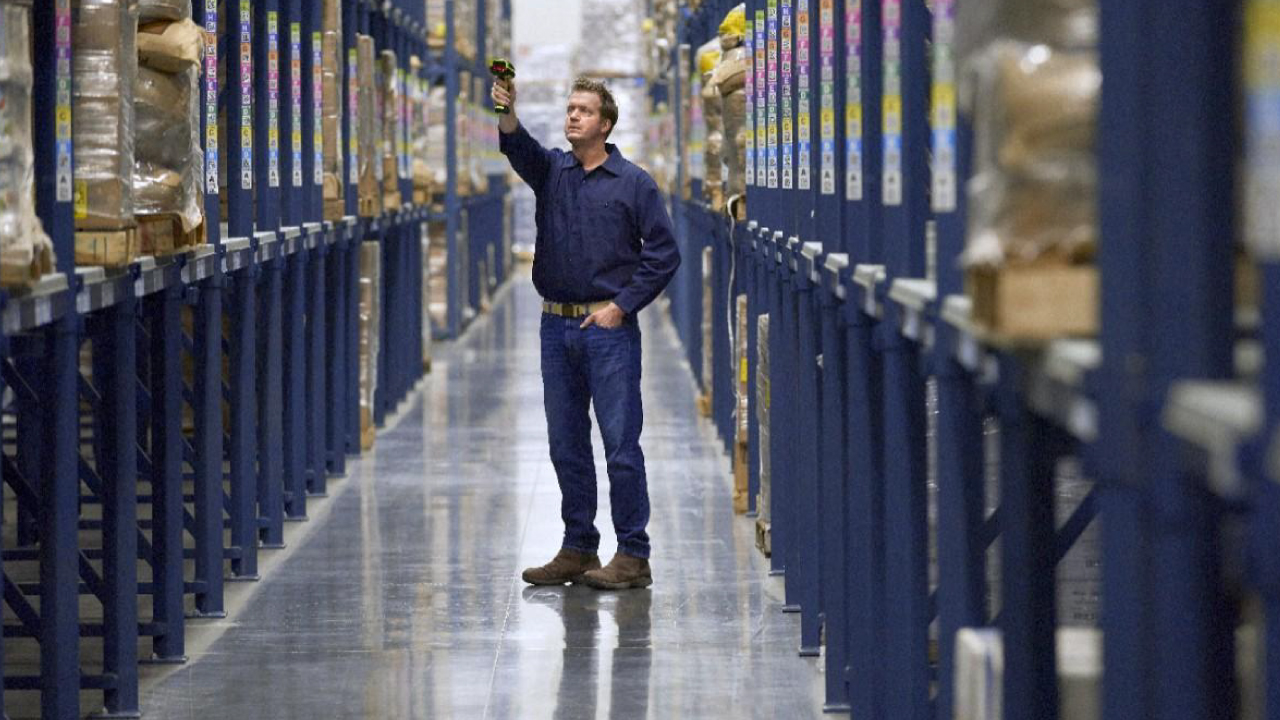Transform retail operations with Zebra’s retail technology solutions, featuring hardware and software for improving inventory management and empowering teams.
Streamline operations with Zebra’s healthcare technology solutions, featuring hardware and software to improve staff collaboration and optimise workflows.
Enhance processes with Zebra’s manufacturing technology solutions, featuring hardware and software for automation, data analysis, and factory connectivity.
Zebra’s transportation and logistics technology solutions feature hardware and software for enhancing route planning, visibility, and automating processes.
Zebra's hospitality technology solutions equip your hotel and restaurant staff to deliver superior customer and guest service through inventory tracking and more.
Zebra's market-leading solutions and products improve customer satisfaction with a lower cost per interaction by keeping service representatives connected with colleagues, customers, management and the tools they use to satisfy customers across the supply chain.
Empower your field workers with purpose-driven mobile technology solutions to help them capture and share critical data in any environment.
Zebra's range of mobile computers equip your workforce with the devices they need from handhelds and tablets to wearables and vehicle-mounted computers.
Zebra's desktop, mobile, industrial, and portable printers for barcode labels, receipts, RFID tags and cards give you smarter ways to track and manage assets.
Zebra's 1D and 2D corded and cordless barcode scanners anticipate any scanning challenge in a variety of environments, whether retail, healthcare, T&L or manufacturing.
Zebra's extensive range of RAIN RFID readers, antennas, and printers give you consistent and accurate tracking.
Choose Zebra's reliable barcode, RFID and card supplies carefully selected to ensure high performance, print quality, durability and readability.
Zebra's location technologies provide real-time tracking for your organisation to better manage and optimise your critical assets and create more efficient workflows.
Zebra's rugged tablets and 2-in-1 laptops are thin and lightweight, yet rugged to work wherever you do on familiar and easy-to-use Windows or Android OS.
With Zebra's family of fixed industrial scanners and machine vision technologies, you can tailor your solutions to your environment and applications.
Zebra’s line of kiosks can meet any self-service or digital signage need, from checking prices and stock on an in-aisle store kiosk to fully-featured kiosks that can be deployed on the wall, counter, desktop or floor in a retail store, hotel, airport check-in gate, physician’s office, local government office and more.
Discover Zebra’s range of accessories from chargers, communication cables to cases to help you customise your mobile device for optimal efficiency.
Zebra's environmental sensors monitor temperature-sensitive products, offering data insights on environmental conditions across industry applications.
Enhance frontline operations with Zebra’s AI software solutions, which optimize workflows, streamline processes, and simplify tasks for improved business outcomes.
Zebra Workcloud, enterprise software solutions boost efficiency, cut costs, improve inventory management, simplify communication and optimize resources.
Keep labour costs low, your talent happy and your organisation compliant. Create an agile operation that can navigate unexpected schedule changes and customer demand to drive sales, satisfy customers and improve your bottom line.
Drive successful enterprise collaboration with prioritized task notifications and improved communication capabilities for easier team collaboration.
Get full visibility of your inventory and automatically pinpoint leaks across all channels.
Reduce uncertainty when you anticipate market volatility. Predict, plan and stay agile to align inventory with shifting demand.
Drive down costs while driving up employee, security, and network performance with software designed to enhance Zebra's wireless infrastructure and mobile solutions.
Explore Zebra’s printer software to integrate, manage and monitor printers easily, maximising IT resources and minimising down time.
Make the most of every stage of your scanning journey from deployment to optimization. Zebra's barcode scanner software lets you keep devices current and adapt them to your business needs for a stronger ROI across the full lifecycle.
RFID development, demonstration and production software and utilities help you build and manage your RFID deployments more efficiently.
RFID development, demonstration and production software and utilities help you build and manage your RFID deployments more efficiently.
Zebra DNA is the industry’s broadest suite of enterprise software that delivers an ideal experience for all during the entire lifetime of every Zebra device.
Advance your digital transformation and execute your strategic plans with the help of the right location and tracking technology.
The Zebra Aurora suite of machine vision software enables users to solve their track-and-trace, vision inspection and industrial automation needs.
Zebra Aurora Focus brings a new level of simplicity to controlling enterprise-wide manufacturing and logistics automation solutions. With this powerful interface, it’s easy to set up, deploy and run Zebra’s Fixed Industrial Scanners and Machine Vision Smart Cameras, eliminating the need for different tools and reducing training and deployment time.
Aurora Imaging Library™, formerly Matrox Imaging Library, machine-vision software development kit (SDK) has a deep collection of tools for image capture, processing, analysis, annotation, display, and archiving. Code-level customisation starts here.
Aurora Design Assistant™, formerly Matrox Design Assistant, integrated development environment (IDE) is a flowchart-based platform for building machine vision applications, with templates to speed up development and bring solutions online quicker.
Designed for experienced programmers proficient in vision applications, Aurora Vision Library provides the same sophisticated functionality as our Aurora Vision Studio software but presented in programming language.
Aurora Vision Studio, an image processing software for machine & computer vision engineers, allows quick creation, integration & monitoring of powerful OEM vision applications.
Adding innovative tech is critical to your success, but it can be complex and disruptive. Professional Services help you accelerate adoption, and maximise productivity without affecting your workflows, business processes and finances.
Zebra's Managed Service delivers worry-free device management to ensure ultimate uptime for your Zebra Mobile Computers and Printers via dedicated experts.
Find ways you can contact Zebra Technologies’ Support, including Email and Chat, ask a technical question or initiate a Repair Request.
Zebra's Circular Economy Program helps you manage today’s challenges and plan for tomorrow with smart solutions that are good for your budget and the environment.

Five Reasons to Invest in An Extended Range Scanner
Customer demands are influencing warehouse operations. As expectations rise for fast, efficient delivery of goods, the warehouse is seeking accurate, resilient, fast technology that can cope with whatever is thrown at it, quite literally.
Warehouses are utilising every conceivable shelf space to increase inventory capacity and reduce the overall cost of storage. Using vacant vertical space means boxes are stacked higher, putting barcodes out of reach or in awkward nooks and crannies for a short-range scanner. It’s no surprise that research has revealed that a priority investment area for warehouse managers is sophisticated technology such as mobile devices, barcode scanning devices and interconnected solutions to reach these elusive barcodes and keep up with rising supply chain demands.
As the pressure created by consumer demand continues, the onus is on warehouse operations to be innovative and efficient in use of space and identification of stock. Efficiency, accuracy and resilience are the name of the game.
Standard short-range barcode scanners simply are not going to acquire the data with the ease, precision and convenience required in modern warehouses. As a result, extended range barcode scanning solutions are becoming essential. They give warehouse operators the ability to acquire product information at any point with minimal effort, which saves time and, in turn, reduces the overall cost of operations.
Specifically, investing in extended range scanner technology brings the following five advantages:
1. Speed
Speedy scanning means increased productivity and overall efficiency. Seeing as most operations need to be done ‘ASAP, extended range barcode scanners are vital time savers. A forklift driver, for example, can scan quickly and safely from the cab. If he or she can shave 12 seconds off every scan by staying seated, that’s an hour saved per 300 scans. In addition, extended range scanners scan sequentially, meaning that the operator can hold down the trigger to identify multiple items.
2. Intuitive operation
Extended-range scanners generally utilise omnidirectional scanning technology, meaning that aligning the scanner and barcode is unnecessary. This is essential for a vertically stacked warehouse and reduces time taken to acquire information. Combining the omnidirectional support with long-range capability means the operator no longer wastes time pacing the warehouse floor continuously to scan goods. See a long-range scanner in action here, where the operator is able to scan various distances from the same spot.
3. Unwavering performance
In an operating environment that’s typically dimly lit, dusty and dirty, long-range barcode scanning technology will continually provide ‘first time capture’ from afar. Whether scanning 1D / 2D barcodes, OCR, photos or documents with the grubbiest barcode stuck under numerous layers of shrink-wrap, the accuracy and precision of the best ones will not falter.
4. Resilience
Any scanner used in a warehouse environment should be able to withstand the most punishing conditions, including extreme temperatures, liquid and chemical spills, being dropped at ladder height or dropped in water. They should also boast an extreme level of shock tolerance and continue to function superbly even after repeated drops onto concrete – or being driven over. (It happens.) Fortunately, ultra-rugged extended-range scanners will meet these minimum requirements – and more, as evidenced in these videos.
5. Short-range capability
A common misconception is that extended-range scanning technology is only applicable for barcodes that are out of reach. On the contrary, extended-range scanners offer excellent capability at short range as well. A barcode a few centimetres away is just as attainable as one that is 21m away – straight up, across or diagonally. This eliminates the need to purchase multiple devices, improving return on investment (ROI) whilst securing rugged, accurate scanning equipment for all your warehouse needs.
A word of caution, though: consistent accuracy can still be a ‘long shot’ with some long-range (and even extended-range) scanners. Before you make a scanner selection, put it to the (extreme) test. See if it can capture a target barcode 21 metres away. Confirm that it can handle the volume of scans that demanded during a typical ‘peak season’ day. The scanner should be accurate every time, whether it’s the first or 1000th scan of the day. The performance of your fulfilment operations depends on this accuracy, as you will see by the results of our latest Future of Fulfilment Vision Study.
Download the report now:
NALA EMEA APAC
Side note: You may have noticed that I used the term ‘extended-range scanner’ versus long-range scanner. That was intentional. They are not the same. While both are intended to support scanning from further distances than short-range scanners, a long-range scanner typically reaches about 12-15 metres (40-50 feet). An extended-range scanner, on the other hand, will capture data from over 21 metres away as noted above.

Steve Mulroy
Steve Mulroy is a Product Marketing Manager, working in the EMEA Solutions Marketing Team at Zebra. Mr. Mulroy has more than 20 years of experience working in B2B technology in marketing and product management roles. At Zebra, he’s responsible for marketing launches and driving campaigns, specifically focusing on the Advanced Data Capture and Services portfolios and related solutions.
Zebra Developer Blog
Zebra Developer Blog
Are you a Zebra Developer? Find more technical discussions on our Developer Portal blog.
Zebra Story Hub
Zebra Story Hub
Looking for more expert insights? Visit the Zebra Story Hub for more interviews, news, and industry trend analysis.
Search the Blog
Search the Blog
Use the below link to search all of our blog posts.
Most Recent
Legal Terms of Use Privacy Policy Supply Chain Transparency
ZEBRA and the stylized Zebra head are trademarks of Zebra Technologies Corp., registered in many jurisdictions worldwide. All other trademarks are the property of their respective owners. ©2025 Zebra Technologies Corp. and/or its affiliates.






